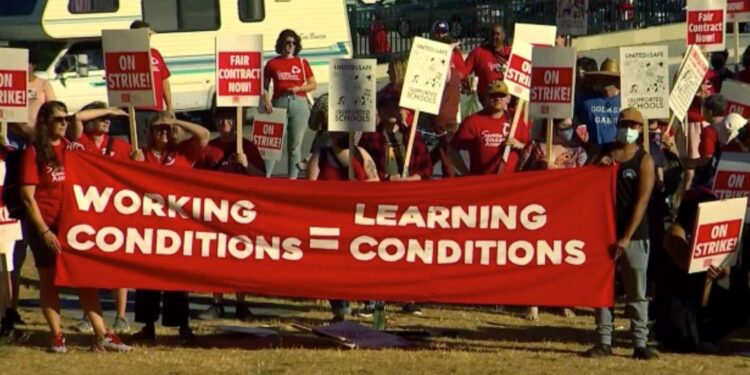In the midst of a strike that delayed the start of the school year by five days as they bargained over improvements to classroom sizes, pay, and health services, Seattle Public Schools earlier announced a tentative, three-year contract agreement with the educators’ union. The vote followed that announcement.

SEA president Jennifer Matter stated that the strike “shows the power that educators and community have when we join and call for what our students need.” We all have reason to be proud of what we’ve done for our students and our schools here.
The strike formally began on Wednesday, the first day of classes for almost 50,000 students in the Seattle school district.
The district stated in a statement that the five days the students missed will need to be made up throughout the academic year.

“We are ecstatic to welcome instructors and students back into our classrooms as the new academic year gets underway. We are eager to fully commit to our moral obligation of providing high-quality teaching and learning, “Brent Jones, the superintendent, remarked.
On Wednesday, the first day of classes for nearly 50,000 kids in the Seattle school district, the strike officially started.
The action was taken at a time when teachers are in short supply in schools across the nation and are growingly vocal about their anger over their low pay and lack of appreciation, as well as their difficult teaching conditions that have been made worse by the Covid-19 outbreak.
According to the Seattle Education Association,
Which represents about 6,000 employees, teachers in Seattle went on strike to demand better special education staffing ratios as well as more support for students, including interpretation and translation services for those receiving multilingual education.

“We are teachers. Striking is not something we have much experience with. We don’t want to be doing it. We desire to be there in our classrooms with our students, “Ellen Santarelli, a teacher, stated in a video on Facebook. However, “we are willing to walk beyond of our comfort zones — thousands of steps outside of our comfort zones” to obtain what our students need.
The contract’s specifics won’t be made public until after it has been approved, but according to the SEA, it preserves Special Education ratios while also improving them in some places, provides minimum mental health staffing to all schools, and raises salaries annually.
The vote to ratify the tentative agreement related to the strike will take place later this week, the union said.
For days, teachers stood on the picket lines with posters reading “make mental health a priority,” “finance vital assistance,” and “children should be able to see a nurse any schoolday.”
In order to continue months-long talks, no students attended a class on Tuesday in the Ridgefield School District in Washington State.

Teachers in the Ridgefield district, which enrols roughly 3,850 children close to the Oregon border, went on strike Friday in support of improved special education services, increased mental health supports, and a stronger student intervention programme.
They joined thousands of other teachers throughout the nation who, in recent weeks, also went on strike to demand higher pay and better working conditions in the classroom.
Teachers in Kent, who are covered by the Kent Education Association, ended their strike after reaching an agreement with the educational system.
Another public school district in Washington state, the Kent School District, finished negotiations last week after the academic year had been similarly postponed since it began in July.
After negotiating a deal with the school system, the Kent Education Association-represented teachers in Kent called off their strike.

A two-week-old deal that includes assurances that classrooms will be climate-controlled by the start of the 2025–2026 academic year as well as a decrease in class sizes brought an end to a strike by the teachers’ union in Columbus, Ohio, over working conditions and wages.









